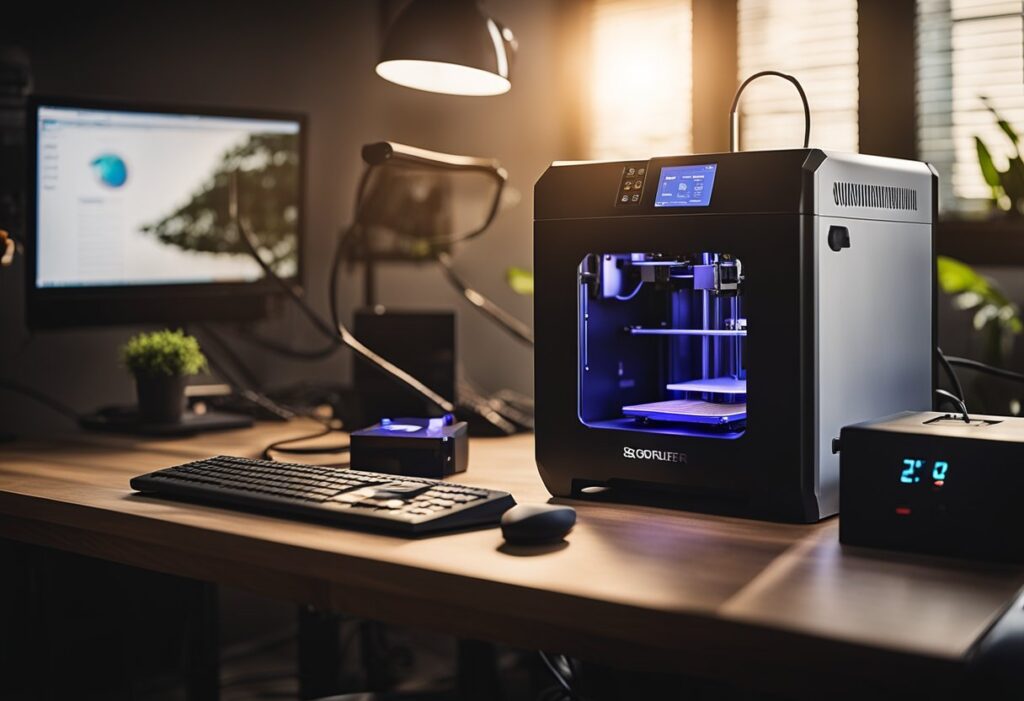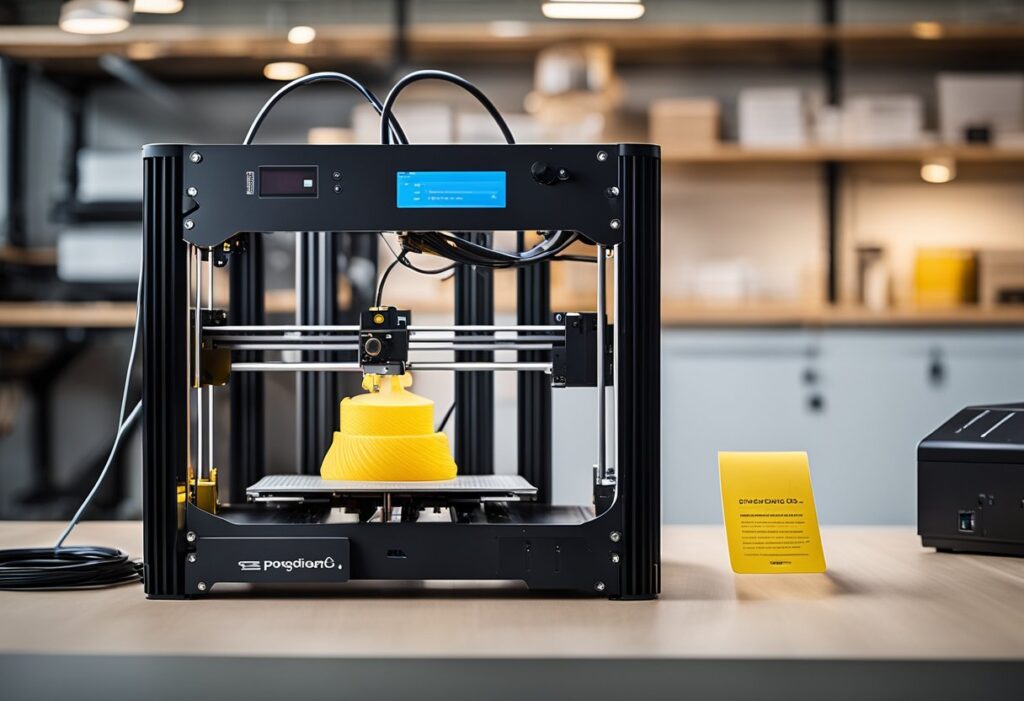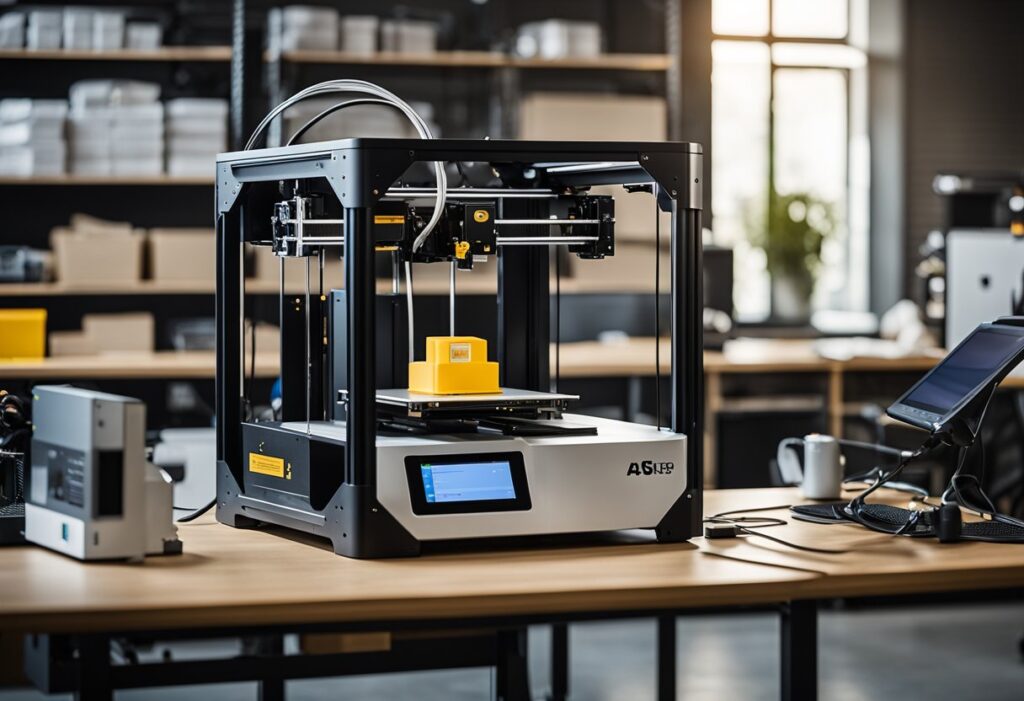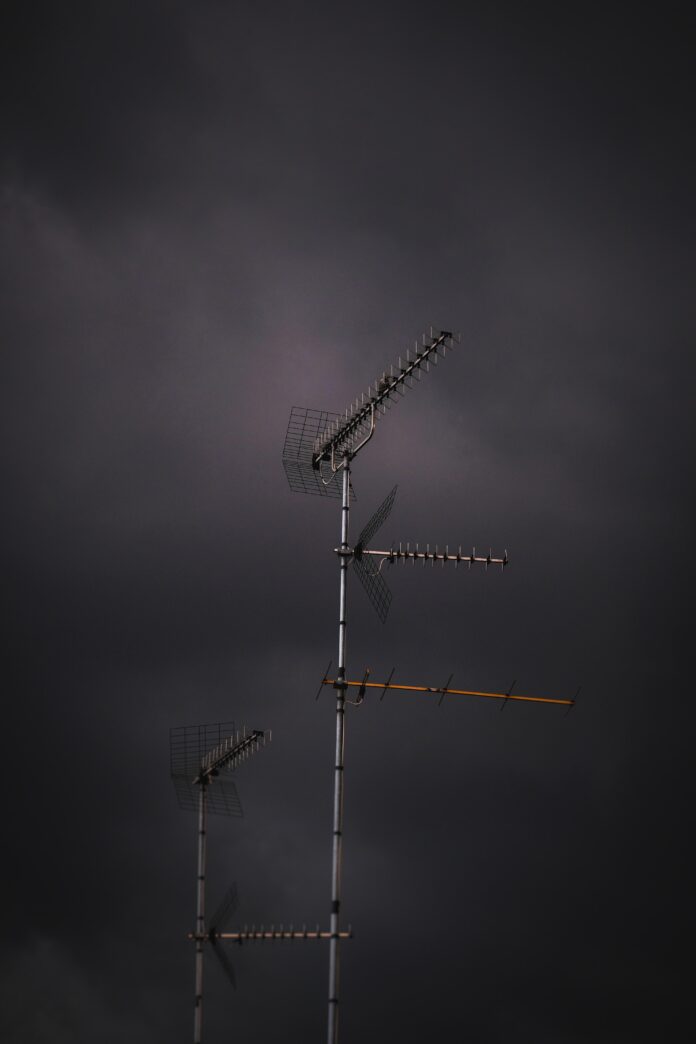Power outages pose a significant threat to 3D printing operations, potentially causing damage to printers and ruining prints in progress. Any interruption in power can lead to a loss of work, and for those relying on 3D printing for business or critical projects, the ramifications can be costly. It is crucial for individuals and businesses alike to safeguard their equipment against such unpredictable events.

Protective measures range from simple solutions, like surge protectors, to more complex systems, such as uninterruptible power supplies (UPS) that can provide a buffer against short-term power cuts. In addition to hardware solutions, there are firmware and software strategies that can help mitigate the damage of power failures, enabling printers to resume operation after an interruption. Regular maintenance and adherence to best practices further enhance a printer’s resilience to power outages, ensuring the longevity and reliability of the machinery.
Key Takeaways
- Protecting 3D printers from power outages preserves prints and equipment.
- Implementing both hardware and software strategies can mitigate outage impacts.
- Regular maintenance enhances printer resilience against power fluctuations.
Understanding Power Outages

Power outages can occur due to various reasons and have different durations and scopes. For 3D printers, power outages can cause disruptions that may lead to failed prints or damage to the device.
Types of Power Outages
- Transient Faults: Brief power losses lasting for seconds. These are often caused by temporary faults in the power grid.
- Brownouts: Reductions in voltage in an electrical power supply system. These can last for minutes to hours and are typically intentional to prevent a blackout.
- Blackouts: Complete loss of power in an area, which can last for hours or days. They are usually the result of grid failure or natural disasters.
Risks to 3D Printers
- Print Failures: Without power, printers cannot maintain operations, leading to incomplete prints.
- Component Damage: Sudden power loss can damage the electronic components of 3D printers.
- Data Loss: In-progress printing instructions may be lost, which might require reprinting from the beginning.
Preventive Measures

To safeguard a 3D printer from power outages, implementing protective devices is essential. These devices mitigate risks from power surges and interruptions.
Surge Protectors
Surge protectors are critical in defending 3D printers from voltage spikes. They act as a barrier, diverting excess voltage away from sensitive electronics. It’s important to select a surge protector with a Joule rating appropriate for the printer’s requirements.
- Joule Rating: High enough to protect against common surges
- Clamping Voltage: Lower values offer better protection
Uninterruptible Power Supplies (UPS)
A UPS provides temporary power to a 3D printer in the event of a blackout. By choosing a UPS with sufficient VA (volt-ampere) rating, a 3D printer can continue to operate for a short time after losing power, preventing incomplete prints.
- VA Rating: Match or exceed the printer’s power requirements
- Battery Runtime: At least long enough to save progress or complete smaller prints
Voltage Regulators
Voltage regulators ensure a constant voltage level to the 3D printer. Fluctuations in power levels can lead to print defects or hardware damage. A regulator maintains optimal operating conditions for the printer.
- Output Voltage Stability: Within ±1% of the desired voltage for best performance
- Capacity: Adequate for the printer’s power consumption
Power Outage Detection

Effective power outage detection in 3D printers involves two fundamental components: monitoring systems to sense power interruptions and alert systems to notify the user. These systems serve as a proactive measure to safeguard the printer against sudden stops and potential damage caused by power outages.
Sensors and Monitoring Systems
To detect power outages promptly, a 3D printer should be installed with sensors and monitoring systems. These include:
- Voltage sensors: They continuously measure the input power supply’s voltage levels.
- Current sensors: These sensors track the flow of electric current to the printer.
When irregularities are detected, such as a drop below the operational voltage or current threshold, it indicates a potential power outage.
Automated Alert Systems
Once a disruption is identified, automated alert systems play a crucial role in informing the user. They include:
- Email notifications: The system automatically sends an email to a predetermined address.
- SMS alerts: A text message is sent to the user’s mobile phone.
These alerts can also be configured to notify via smartphone applications or direct messages to other connected devices, allowing for immediate awareness and action.
Backup Power Solutions

In the event of power outages, protecting a 3D printer is crucial. Battery backups and generators are reliable solutions that offer continuous power supply, effectively preventing disruptions in 3D printing tasks.
Battery Backups on Amazon
APC UPS Battery Backup & Surge Protector, the BE600M1 model, offers 600VA which is suitable for small 3D printers. It provides up to 7.5 minutes of runtime at half load and 2.5 minutes at full load.
- CyberPower CP1500AVRLCD Intelligent LCD UPS System
- Power Capacity: 900W / 1500VA
- Runtime: 12 minutes at half load, 3 minutes at full load
- Features: Multifunction LCD panel, Automatic Voltage Regulation (AVR)
Generators on Amazon
WEN 56200i Super Quiet 2000-Watt Portable Inverter Generator offers a 79.7cc 4-stroke engine that delivers 2000 surge watts and 1600 rated watts. It is designed to mirror a pure sine wave and limits total harmonic distortion to under 0.3 percent at no load and under 1.2 percent at full load, making it safe for 3D printers and other delicate electronics.
- Westinghouse Outdoor Power Equipment WGen7500 Portable Generator
- Power Output: 9500 starting watts, 7500 running watts
- Run Time: Up to 11 hours at half load
- Features: Remote start with included key fob, engine oil, oil funnel, tool kit, and user’s manual
Both the APC UPS and the WEN 2000-Watt generator can be found with detailed specifications and customer reviews to help in making an informed decision.
Firmware and Software Strategies

Incorporating the right firmware and software strategies can significantly mitigate the risks associated with power outages for 3D printers. These strategies involve enabling power loss recovery features and customizing firmware configurations.
Power Loss Recovery Features
Many modern 3D printers come equipped with power loss recovery capabilities. This function allows a printer to resume a print job after an unexpected shutdown. To utilize this feature, users must ensure it’s activated within the printer’s settings or the accompanying slicing software. Each manufacturer may have a different name for this feature, but the core functionality remains to save the print’s progress at the moment the power was lost.
Typical Steps to Enable Power Loss Recovery:
1. Access the printer's settings menu
2. Locate the power recovery options
3. Enable the power recovery feature
Firmware Configurations
Adjusting firmware configurations is paramount for enhancing a 3D printer’s resilience to power outages. Many printers run on open-source firmware like Marlin or Repetier, which can be customized to improve power outage responses. Users should update their firmware to the latest version to ensure they have the most current power outage features.
Key Configuration Parameters:
- Save to EEPROM: Ensuring the printer’s firmware can save current states to non-volatile memory.
- Resuming State: Configuring the firmware to correctly recognize a resuming state after a power interruption.
Configuring the firmware requires a degree of technical knowledge, so users are encouraged to follow the specific instructions provided by their printer manufacturer or firmware documentation.
Maintenance and Best Practices

To ensure your 3D printer is safeguarded against power outages, one must engage in consistent equipment maintenance and adhere to best practices for operational preparedness.
Regular Equipment Testing
Frequency of Tests: The person in charge should conduct power backup system tests on a monthly basis. This is to confirm that uninterruptible power supplies (UPS) and generators function as expected during an abrupt loss of power.
Checklist for Inspection:
- Inspect UPS battery levels and replace if below the manufacturer’s recommended threshold.
- Verify that the power generator starts automatically and provides the necessary voltage for the 3D printer.
Training and Preparedness
Staff Training: Operators should receive thorough training on emergency protocols, including steps to follow during a power outage to minimize damage and data loss.
Emergency Drills:
- Conduct regular drills simulating a power outage to ensure that staff are familiar with emergency procedures.
- Document any weaknesses found during drills to refine the emergency response plan accordingly.
Conclusion

Safeguarding a 3D printer against power outages is crucial for maintaining the integrity of printing projects and the longevity of the equipment. Uninterruptible Power Supplies (UPS) systems are the first line of defense, providing immediate backup power and preventing disruptions. Next, surge protectors shield against power spikes which can damage sensitive electronics.
Users may also consider investment in a generator for long-term outages, ensuring that printing can continue without reliance on the grid. For added protection, in-built recovery features or software solutions can resume printing from the point of interruption, effectively reducing material waste and time.
Implementing a routine maintenance schedule for the power backup solutions is essential to ensure they function as expected when needed. Regular tests and checks guarantee that backup systems are ready to engage at a moment’s notice.
Lastly, it is always recommended to remain informed about the latest advancements in 3D printing technology and power protection methods. Staying updated allows users to take advantage of new features and accessories that may offer improved defense against power outages.
By adopting these strategies, users can ensure their 3D printing operations are resilient in the face of electrical disruptions.












